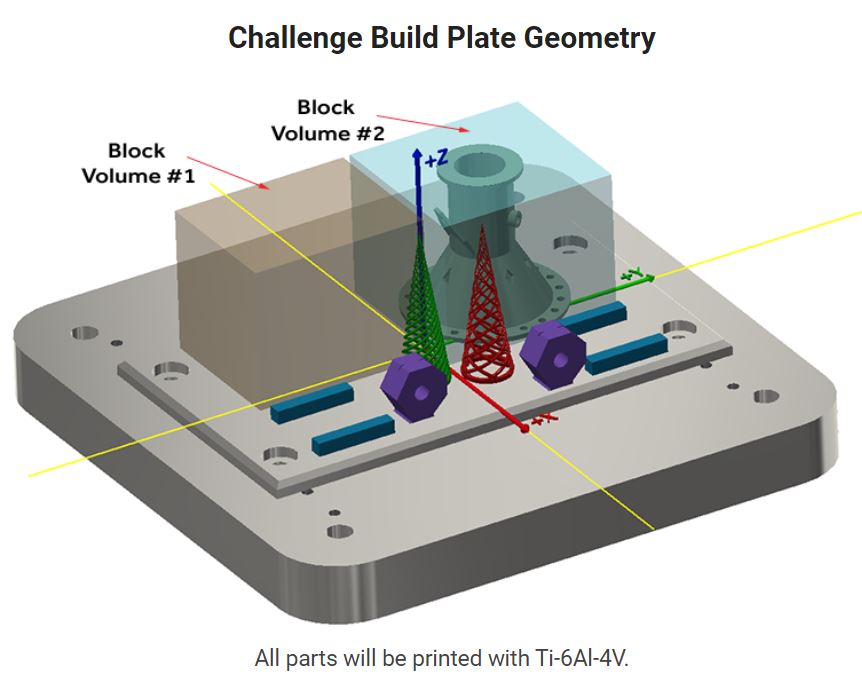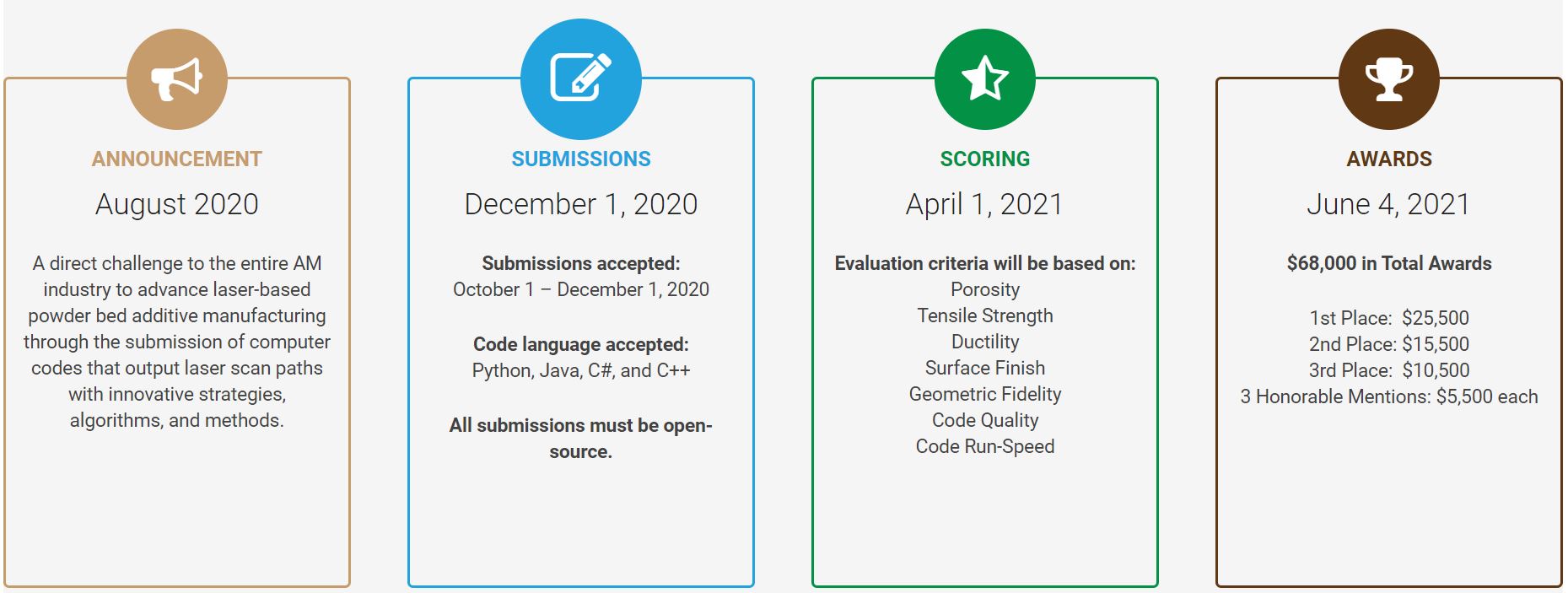America Makes has launched a new competition to advance scanning path development in laser-based powder based additive manufacturing (AM), in partnership with GE Research and the Air Force Research Laboratory.
The new challenge asks participants to develop open-source computer codes and algorithms, using Python, Java, C# and C++, to create new, innovative scan strategies for laser-based powder bed AM. Participants will download data from a secure project website and use this to build open source solutions as part of their submissions.
These will be evaluated for predefined code requirements, code speed and quality, and the best entries here will then have samples printed in titanium for a material properties evaluation which will look at part porosity, tensile strength, ductility, surface finish, geometric fidelity etc.
The approach and solutions that emerge from this challenge will not only prove the ability to develop using open-source algorithms, but will also provide an alternative to proprietary hurdles and challenges in commercial scan strategies.
“While tremendous progress has been made in this space there are still challenges with the proprietary nature of commercial scan strategies,” said America Makes Executive Director John Wilczynski. “This challenge seeks to address those issues head-on and create a body of work that can be utilized across the industry.”
Laser scanning patterns impact the porosity, microstructure, surface finish and heat build-up in metal 3D printed parts. The lack of effective scanning strategies can result in cracking, ‘spatter’, keyholes, warpage, deformation, part variability, and other defects. Production metal 3D printing systems come with commercial scanning strategies built-in; however, these are proprietary. Advancing the use of laser powder bed fusion technologies in mass producing high-quality, reliable metal parts has as such been constrained by the inherent development of internal stresses due to the lack of or poor scanning strategies in the 3D printed metal part. These residual stresses are caused by thermal gradients and can result in deformation or failure or the part, and difficulties in its post processing. Hence, the need for open innovation in scanning strategies, and the ability to collaboratively improve the industrial performance of metal 3D printing systems.
The winning solutions and evaluations will be integrated into the America Makes AM Roadmap, and the America Makes Digital Storefront. The challenge, launched this Tuesday, offers $68,000 in prize money, with $25,500 awarded for the winning entry. This initiative by America Makes, the first of eight public-private partnership Manufacturing Innovation Institutes managed and operated by the National Center for Defense Manufacturing and Machining by the US Department of Defense, is one of several challenges announced this year, to advance the applicability of AM solutions for a wide-range of critical manufacturing issues. In this case, the OASIS competition website states,
“However, most commercial scan strategies are proprietary making it difficult to fully understand the process. Therefore, development is necessary in the open-sector to realize improvement in microstructural homogeneity, surface roughness, geometric tolerance, and distortion via optimization of scan strategies. The Open-source Additive Scanning Implementation Strategy (OASIS) Challenge is a direct challenge to the AM industry to advance temporal and spatial thermal management through the submission of innovative scan strategy codes, algorithms, and/or methods.”
In February this year, the organization appointed eleven new members, leaders in the AM industry, to its Executive Committee. In April, post onset of the pandemic, the Fit-to-Face Mask Design Challenge and Covid-19 Maker Challenge were announced calling for new AM solutions to support first responders and to enhance the design of personal protective equipment (PPE) face masks. In May this year, America Makes announced project calls for innovative solutions for precision optical components using AM. This was funded by the AFRL with $840,000 awarded to the winning project team. In July, America Makes received $1.4 million through a grant from the National Institute of Standards and Technology (NIST) to advance its work in addressing PPE shortages in collaboration with small and medium businesses. Later in July, the winners of the AFRL AM Modeling Challenge were announced, and were awarded $235,000 for improving the prediction accuracy for internal structures and performance models in metal AM (specifically with Inconel 625). In August, four new project calls were announced in areas of materials data, process monitoring, data management, education and workforce development, and AM for hypersonic applications. These challenges also introduced a new way for members and stakeholders to provide direct inputs to address critical supply chain challenges in collaboration with America Makes.
Subscribe to Our Email Newsletter
Stay up-to-date on all the latest news from the 3D printing industry and receive information and offers from third party vendors.
You May Also Like
Gorilla Sports GE’s First 3D Printed Titanium Cast
How do you help a gorilla with a broken arm? Sounds like the start of a bad joke a zookeeper might tell, but it’s an actual dilemma recently faced by...
Nylon 3D Printed Parts Made More Functional with Coatings & Colors
Parts 3D printed from polyamide (PA, Nylon) 12 using powder bed fusion (PBF) are a mainstay in the additive manufacturing (AM) industry. While post-finishing processes have improved the porosity of...
$25M to Back Sintavia’s Largest Expansion of Metal 3D Printing Capacity Since 2019
Sintavia, the digital manufacturing company specializing in mission-critical parts for strategic sectors, announced a $25 million investment to increase its production capacity, the largest expansion to its operations since 2019....
Velo3D Initiates Public Offering in a Bid to Strengthen Financial Foundations and Drive Future Growth
Velo3D (NYSE: VLD) has been among a number of publicly traded 3D printing firms that have attempted to weather the current macroeconomic climate. After posting a challenging financial report for 2023,...



































